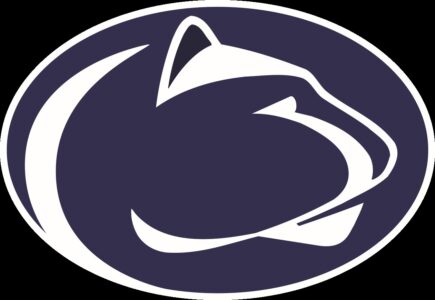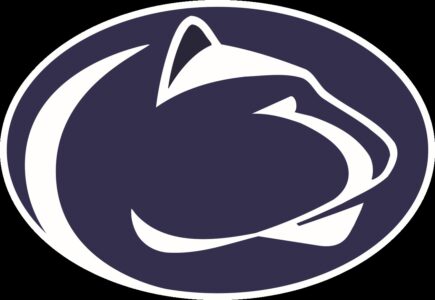1969 Orange Bowl lifted PSU profile: Behind the Nittany Lions’ unlikely comeback that defeated Kansas
Saint Francis University Communications Professor Pat Farabaugh is currently writing a book on Penn State undefeated 1969 football season.
It was the last game of the 1968 season — the Orange Bowl game against Kansas on Jan. 1, 1969 — that served notice to fans across the country that there was a program in the East that was building something special.
Below is an excerpt from Farabaugh’s forthcoming book on that Orange Bowl game, one that will mark its 55th anniversary on Jan. 1.
Less than 24 hours after ringing in the start of a new year, the Penn State football program was back to celebrating.
This time, the Blue and White were toasting one of the most improbable wins in a bowl game in college football history after defeating Kansas, 15-14, in the 35th edition of the Orange Bowl.
Unlikely comeback
The analytics folks didn’t have in-game win probability statistics available 55 years ago: If they did, the Lions’ chances might have dipped into the negatives.
It marked the first New Year’s Day game for Penn State since 1948, when head coach Bob Higgins’ Lions tied SMU, 13-13. Many fans — and both teams’ head coaches — expected a high-scoring Orange Bowl game in 1969.
Third-ranked Penn State’s run-first offense averaged 34 points-per-game during the regular season and No. 6 Kansas, a pass-first team, was the highest scoring team in the country at 38 ppg.
In a game the Nittany Lions dominated statistically — PSU had 361 total yards to KU’s 241– Penn State trailed the Jayhawks, 14-7, late in the fourth quarter.
The score remained tied at seven until the fourth quarter, when bruising fullback John Riggins (who would go on to lead the Washington Redskins to the 1983 Super Bowl title) gave Kansas a seven-point lead on a 1-yard scoring plunge.
With less than two minutes to play in front of a nationally televised audience and 77,719 fans on a moonless night over Miami, the stadium’s public address announcer proclaimed that KU halfback Donnie Shanklin had been selected the game’s Most Valuable Player.
Kansas possessed the ball and a first down and were looking to kill the clock and Penn Staters’ dreams of an undefeated season.
PSU tackle Mike Reid had other plans. After KU quarterback Bobby Douglass was stopped for no gain by Lincoln Lippincott on first down, Reid dropped the Jayhawks QB again for a 6-yard loss on second down and PSU used the first of its three timeouts.
On third down, the Altoona native sacked Douglass again, this time 7 yards behind the line of scrimmage at the KU 25-yard line.
Fourth and 23. Another Penn State timeout. After the timeout, Kansas punted, but the kick was partially deflected by PSU safety Neal Smith. The ball veered left and rolled to midfield.
1:16 left
One minute and 16 seconds remained. “I can’t tell you how many times in my life I have seen one minute and 16 seconds,” said Penn State split end Greg Edmonds more than a half century later.”
Paterno huddled on the sideline with quarterback Chuck Burkhart and receiver Bobby Campbell during the timeout before the punt. “We had a play we had never run before,” recalled Burkhart. One Go. “Joe said ‘Chuck, just get back and throw it over his head.'”
The Penn State coach’s plan was to deceive Kansas’ defense on first down to set up second down. He wanted Campbell to run a post pattern against KU’s prevent defense and Burkhart to throw it well over his receiver’s head and not risk an interception (Burkhart had thrown two picks earlier in the game).
JoePa hoped that the play would convince Kansas that Penn State was intent on going for the long ball. The desired outcome was that the Jayhawks would play an even deeper prevent package on second down.
The plan on second down was for Burkhart to throw a screen pass to All-American split end Ted Kwalick, who would hopefully find some running room after the catch with Kansas’ defense playing farther back.
“So Bobby and I are running back out together and he says ‘don’t throw it over my head. I’m going to run toward the left goalpost,'” recalled Burkhart. “I said ‘the ball will be there.'”
Campbell caught Burkhart’s pass over KU’s Tommy Anderson at the 20-yard line before being brought down at the 3 for a 47-yard gain.
12 men on the field
Time out Penn State, it’s third and final timeout. Sixty-six seconds to play. On the sideline, Paterno gives Burkhart a set of three plays for first, second and third down. Two carries up the middle by Penn State fullback Tom Cherry net zero yards.
“What people never realized is that Kansas put 12 men in (on first down),” said Burkhart. “They put one in for their goal-line defense (linebacker Rick Abernathy) and no one came out. We kept running 37, which is fullback off tackle.
“The first time we run it, we don’t get anything. We call it again and we don’t get anything. I’m coming back to the huddle and I’m saying, ‘hey, somebody is missing this guy.’ And they’re all saying, ‘no, I got my guy, I got my guy.’ I say ‘well, someone is missing somebody.'”
Twenty seconds remained after Cherry’s second carry for no gain. Burkhart calls “56 Scissors” on third down, per the instructions provided to him moments earlier by his 41-year-old head coach. It called for the quarterback to fake a hand-off to the fullback and then give it to Pittman once he criss-crossed the backfield.
“I go to hand to Charlie and I see this linebacker coming in — again,” said Burkhart. “Nobody is blocking him. So I kept the ball.”
Burkhart bootlegged around the left end and scored, untouched, for the first rushing touchdown of his collegiate career. “We don’t even have that play,” Campbell said, “but it worked.”
50th anniversary gift
In commemoration of the 50th anniversary of the 1969 Orange Bowl, officials from the Orange Bowl Committee visited Beaver Stadium for a Penn State game in 2019. The bowl representatives presented Burkart with a hat the reads “The Only Touchdown Scored Against 12 Men in Orange Bowl History.”
Burkhart’s TD cut the KU lead to 14-13. His improvisation play on third down caught his teammates off guard, to say the least.
Playing to win
With 15 seconds to play, it was decision time again for Paterno. Kick the PAT and tie the game or go for two and the win. Rewind a year and two days earlier to Dec. 30, 1967. Penn State led Florida State, 17-0, in the Gator Bowl before the Seminoles scored two touchdowns in the third quarter and a field goal in the fourth to tie the game at 17.
With the score 17-0 in favor of PSU in the second half of that game, the Nits faced a fourth and one and Paterno went for the first down instead of attempting a field goal. Penn State didn’t get it. FSU reeled off 17 straight points and the game ended in a draw.
“I learned my lesson last year,” JoePa said.
Back to the two-point conversion attempt.
“We line up and I am rolling out right to throw a pass,” Burkhart said. “Now they’ve still got 12 men on the field. I’m looking at it and I think ‘OK, nobody is going to block this defensive end because we don’t have enough players.'”
Burkhart fired toward the endzone, looking for his McKees Rocks High School teammate Kwalick, but his pass was batted down.
‘Heaven sent flame’
A group of Kansas fans jumped out of their seats and ran onto the field to celebrate what appeared to be a one-point Jayhawks’ victory. Meanwhile, one of the game’s referees, Foster Grose, threw a flag and began gesturing wildly amidst the chaos. He calls a penalty against Kansas for an illegal procedure. He would later clarify that the flag was because KU had 12 men on the field (for a fourth straight play).
Regardless, it’s a do-over for Penn State, with the ball moved up from the 3-yard line to the 1-and-a-half. Paterno called Grose’s flag a “heaven-sent flame.”
This time, Campbell sweeps to his left and takes the ball from Burkhart. Paterno actually called for a pitch right on the two-point conversion attempt, but as the officials sorted out the chaos of the moment, he changed the play to a sweep left.
After getting the ball from Burkhart, Campbell receives a couple of key blocks, one from Cherry and another from right guard Charlie Zapiec, who takes out All-American Kansas defensive end John Zook. He hurls himself across the goal line. Penn State claims its first lead of the game, 15-14.
In a game that had seemingly been decided multiple times already, Penn State kicks off with eight seconds to play. After a short return, the Jayhawks have time for one final play. The 1969 Orange Bowl ends with junior co-captain Steve Smear wrapping up Douglass following an incomplete pass to secure the Lions’ 19th straight victory dating back to the fall of 1967.
“To be honest,” said Smear’s fellow co-captain Mike Reid after the game, “I don’t know how we won this one.”
Penn State finished the 1968 season ranked No. 2 by the Associated Press and No. 3 by United Press International. The Lions were the only team in the country that played 11 games and won them all. Paterno would earn National Coach-of-the-Year honors.
The improbable Orange Bowl victory, the winning streak and the decision to go for two points all contributed to unprecedented national exposure for a football program that was building something special in the East.
“This (1969) Orange Bowl put us on the map,” said Paterno.
Former Penn State Assistant Sports Information Director and longtime NFL front-office executive Ernie Accorsi agrees.
“Joe really established his uniqueness by going for two against Kansas with the game on the line,” Accorsi said. “Nobody did that. Joe caught everybody’s attention. Sports Illustrated wrote a story that said Penn State has an Ivy League education and plays big-time football.”





